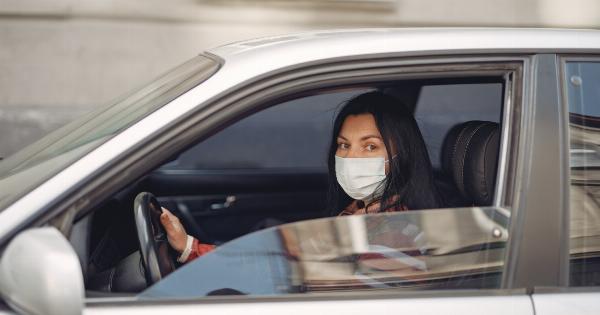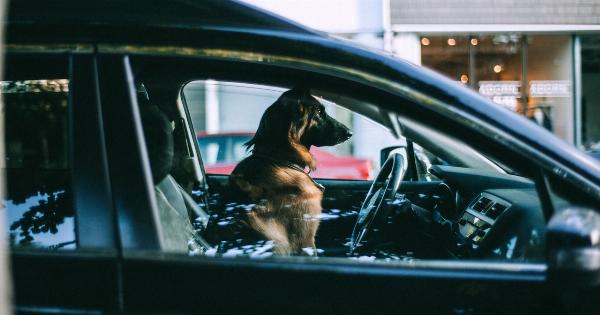Do you feel like a Formula One driver every time you strap your scaredy-cat into the car for a vet appointment? Does he meow, panic and climb up your body all the way there? Do you dread the sounds of claws on car seats and the smell of cat vomit every time you have to take your feline friend on a road trip?.
Why Is Your Cat Terrified of Car Rides?
Cats prefer familiar surroundings and routines, and car rides disrupt both. Also, car rides often lead to unpleasant experiences like going to the vet, moving or being abandoned.
Some cats may have also been conditioned to associate car rides with negative stimuli like motion sickness, loud noises, or extreme temperatures.
How to Make Car Rides Less Frightful for Your Cat
Here are ten tips on how to make car rides less traumatic and more comfortable for your cat:.
1. Plan and Prepare Ahead of Time
Think of car rides as mini-trips for your cat and prepare accordingly. Pack a comfortable carrier with familiar objects like bedding, toys, and treats. Invest in a quality carrier that is spacious, sturdy, and secure.
Place the carrier somewhere visible, accessible, and inviting in your home weeks before the car ride. Encourage your cat to explore the carrier on their own terms and reward them with treats or toys for positive interactions.
2. Familiarize Your Cat with Car Sounds and Positioning
Let your cat adjust to the sounds and vibrations of the car while it’s parked in your driveway. Engage in positive reinforcement by rewarding your cat for calmly facing forward while sitting in the carrier inside the car.
3. Gradual Exposure to Car Rides
If your cat is exceptionally anxious about car rides, start with short trips around the block and gradually increase the duration and distance. Gradual exposure acclimates your cat to the unfamiliar environment and reduces stress and panic reactions.
Do not forget to reward your cat with treats and positive reinforcement for good behavior during car rides.
4. Prevent Motion Sickness
Cats can suffer from motion sickness like humans. Symptoms include vomiting, excessive drooling, panting, and restless behavior. Talk to your veterinarian about over-the-counter or prescription antinausea medication that is safe for your cat.
If medication is not appropriate, try feeding your cat at least three hours before the car ride and avoid feeding them too much, keep the air conditioning on, and open the windows a little to allow fresh air to circulate. Also, cover the carrier with a cloth to reduce visual stimulation and motion sickness.
5. Reduce Distractions and Stressors
Avoid playing loud music, honking, or sudden brakes while in the car. Keep the car windows closed to reduce distracting smells and noises. Also, do not leave your cat unattended in the car or leave your cat exposed to extreme temperatures.
6. Be Calm and Confident
Cats can sense your anxiety and stress and react accordingly. Stay calm, confident, and reassuring during car rides. Speak in gentle tones to your cat. Offer treats and rewards for desirable behaviors.
Also, avoid overstimulating your cat with too much petting or attention; instead, let your cat initiate the interactions.
7. Use Pheromone-Based Products
Pheromones are chemical signals that cats use to communicate with themselves and with their environment. Pheromone-based products are available that calm cats’ nerves and reduce anxiety and stress during car rides.
Ask your veterinarian about these products and how to use them safely.
8. Consider Alternative Transportation
If your cat’s anxiety is severe or if the car ride has to last several hours, consider alternative means of transportation.
Some cats travel well in trains, buses, or planes, while others may prefer to stay at home with a trusted pet sitter or boarder. Talk to your veterinarian or professional animal transporters about the safest and most comfortable means of transportation for your cat.
9. Reward Your Cat After Car Rides
After every car ride, reward your cat with treats, toys or other positive reinforcement. This will help your cat associate car rides with some pleasurable experiences and realize the ordeal wasn’t so bad after all.
10. Consult with Your Veterinarian
If your cat’s fear of car rides persists despite your efforts or if you notice other health issues like excessive drooling, panting, aggression, or other problematic symptoms, consult with your veterinarian.
Your veterinarian can examine your cat, provide a proper diagnosis, and prescribe safe and effective medication or other treatments that will help reduce your cat’s fear and anxiety during car rides.
Conclusion
Car rides don’t have to be traumatic events for your cats. With careful planning, preparation, and gradual exposure, you can make car rides comfortable and stress-free for both you and your feline friend.
Remember to reward your cat with positive feedback, extra cuddles and treats for good behaviors during car rides, and consider alternative transportation options if needed.





























